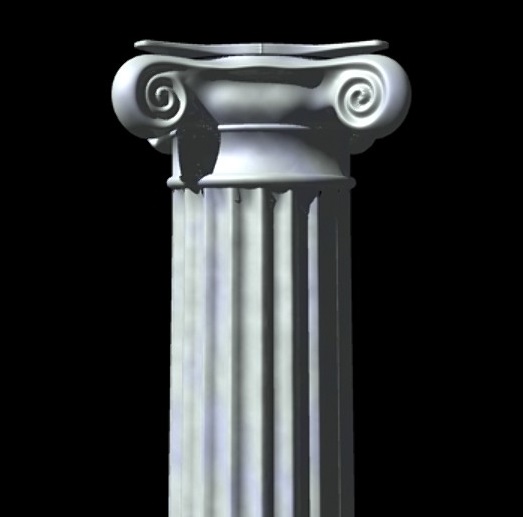Fluting
Fluting, also known as reeding, is a series of regular, concave grooves or convex ridges running vertically or spirally along a surface. Typically, the term ‘fluting’ refers to the grooves found on a column shaft or pilaster.
Fluting features prominently in classical architecture; used in the columns of all the classical orders other the Tuscan. The Doric order has 20 grooves per column, while the Ionic, Corinthian and Composite orders have 24.
It is believed that fluting may have originated from the earliest columns of the Greeks which were made from tree trunks. Vertical gouges were left when the bark was shaved off the trunks. When they began using stone for columns, they continued to form gouges because they gave the columns a taller and more slender appearance. Fluting was also widely adopted for the feeling of rhythm which it gave to the columns and building composition, something that was considered important in particular by temple architects.
A variation is cabled fluting in which the flutes are partly filled by a small, cylindrical moulding or bead. This decorative feature typically does not extend higher than one-third of the height of the column shaft.
[edit] Find out more
[edit] Related articles on Designing Buildings Wiki
Featured articles and news
The history of building regulations
A story of belated action in response to crisis.
Moisture, fire safety and emerging trends in living walls
How wet is your wall?
Current policy explained and newly published consultation by the UK and Welsh Governments.
British architecture 1919–39. Book review.
Conservation of listed prefabs in Moseley.
Energy industry calls for urgent reform.
Heritage staff wellbeing at work survey.
A five minute introduction.
50th Golden anniversary ECA Edmundson apprentice award
Showcasing the very best electrotechnical and engineering services for half a century.
Welsh government consults on HRBs and reg changes
Seeking feedback on a new regulatory regime and a broad range of issues.
CIOB Client Guide (2nd edition) March 2025
Free download covering statutory dutyholder roles under the Building Safety Act and much more.
AI and automation in 3D modelling and spatial design
Can almost half of design development tasks be automated?
Minister quizzed, as responsibility transfers to MHCLG and BSR publishes new building control guidance.
UK environmental regulations reform 2025
Amid wider new approaches to ensure regulators and regulation support growth.
The maintenance challenge of tenements.
BSRIA Statutory Compliance Inspection Checklist
BG80/2025 now significantly updated to include requirements related to important changes in legislation.























